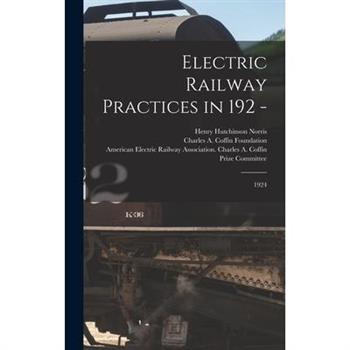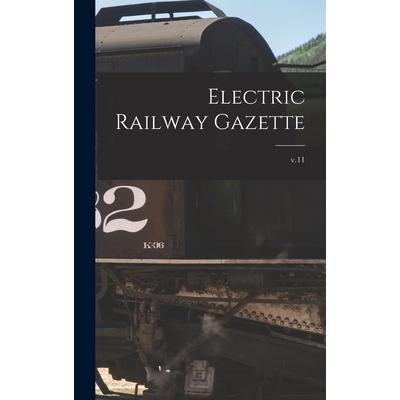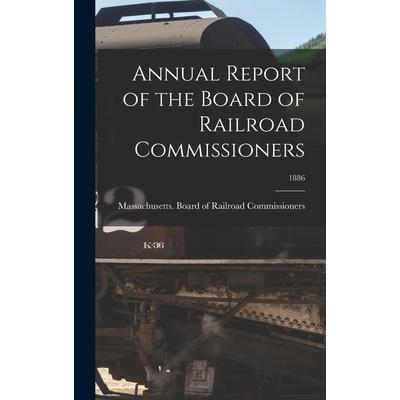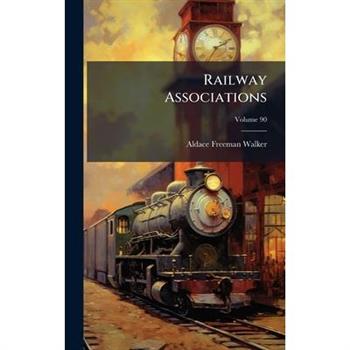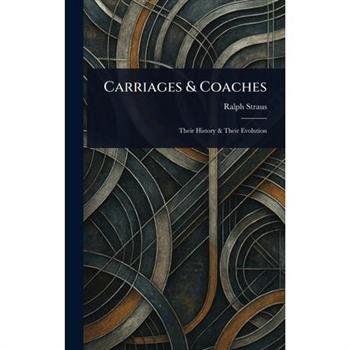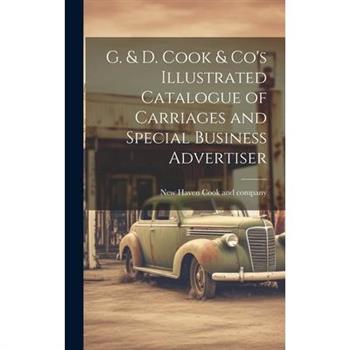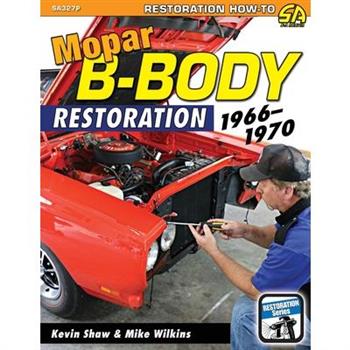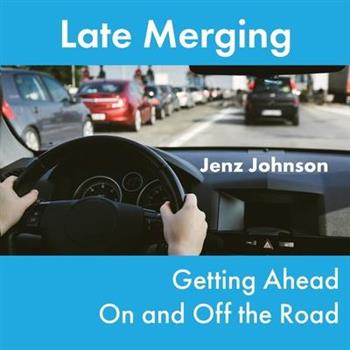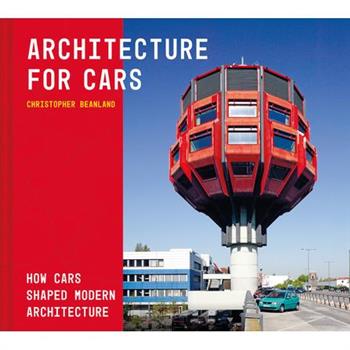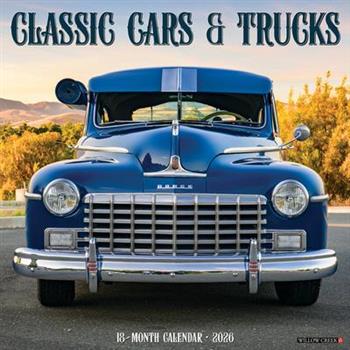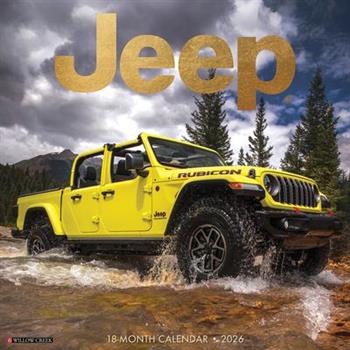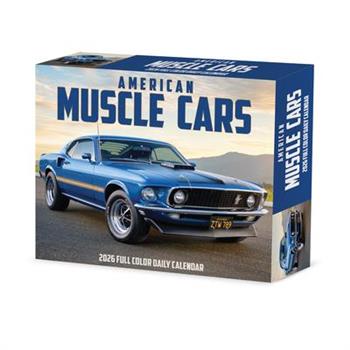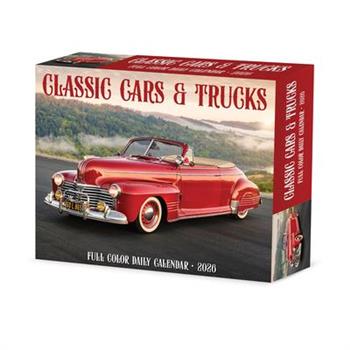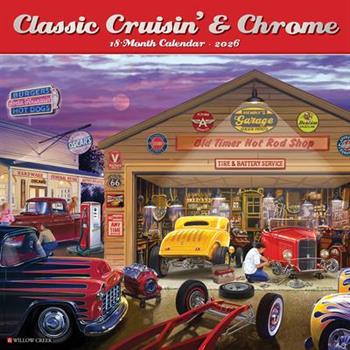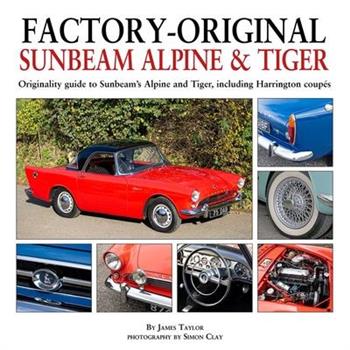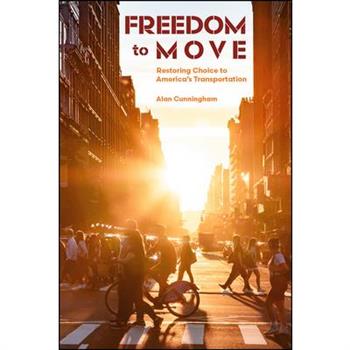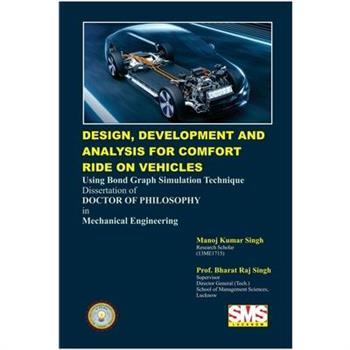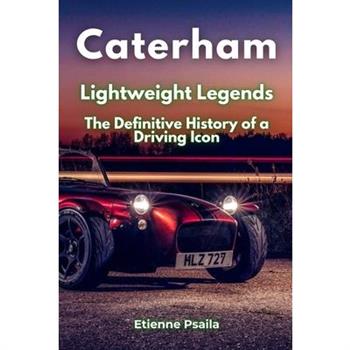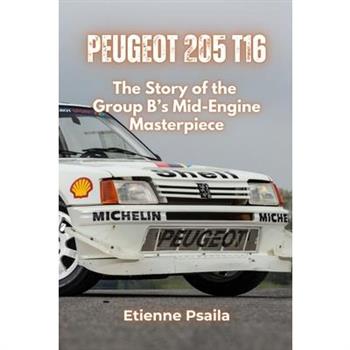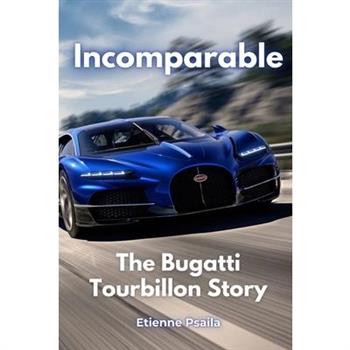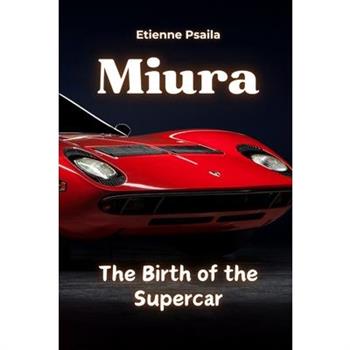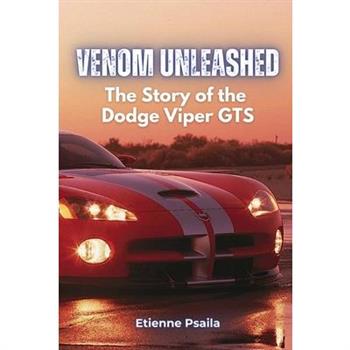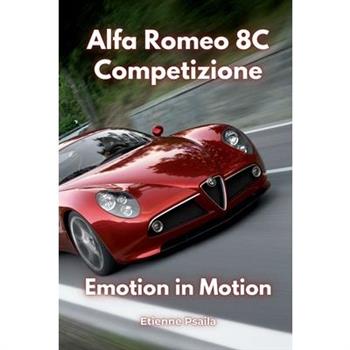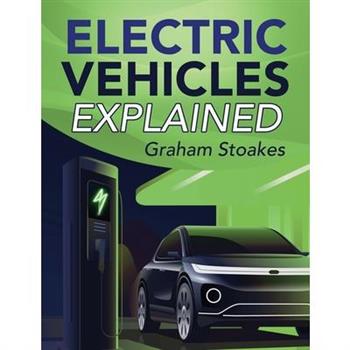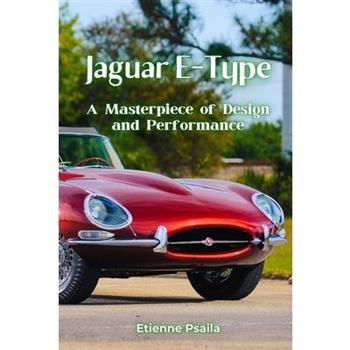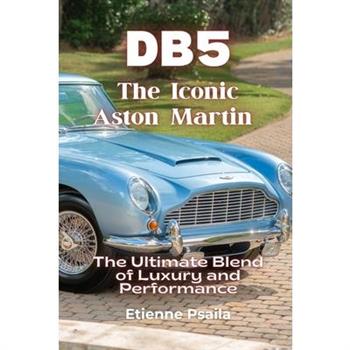Porsche RS
Aerodynamics, lightweight construction, power, and balance: RS models from Porsche are always the sharpest upgrade on this side of the racetrack. For more than 50 years, Porsche 911s of every generation have borne the RS abbreviation for Renn Sport ("sport racing"). RS models dominate motor sports, inspire purists, push amateur racing drivers to their limits, and are simply a lot of fun. Professional automotive journalists Constantin Bergander and Fabian Hoberg provide a unique insight into the fastest chapter of Porsche history. The complete story of the RS is told with - more than 280 full-color photographs; - quotes from the engineers, designers, and other professionals who created and built the RS; and - a detailed data section with full technical specifications for every RS model. The highly informative text, detailed technical data, and emotional and evocative photos by expert photographer Peter Besser document a very special piece of Porsche history.
Mopar B-Body Restoration
The photos in this edition are black and white.The Chrysler B-Bodies from 1966 to 1970 are the most-restored cars in the franchise's storied history. Popular models among them include the Charger, Coronet, GTX, Road Runner, and Super Bee. Restoring a Mopar B-Body is easier than ever with numerous of available aftermarket parts suppliers. This book offers an in-depth resource for restoring a Mopar B-Body. Step-by-step processes walk you through the tasks of metal repair, suspension rebuild, driveline verification, interior restoration, and more. All components are addressed, creating the most complete resource in the marketplace. With multiple step-by-step procedures and more than 400 color photographs, this is the most-complete hands-on book ever written covering these coveted Chryslers. This will be your primary resource when it's time to tackle a full restoration or complete a simple repair on your prized Pentastar. You won't find a cheaper "part" that helps you more than Mopar B-Body Restoration 1966-1970.
Return-Loads Bureaus to Save Waste in Transportation
Roads Not Yet Travelled
What will the world be like in 2050? This book explores possible future worlds through eight speculative fiction stories. Taking in automation, big data, climate catastrophe and government dysfunction, each tale looks at the world through the eyes of people whose lives have been influenced by the societies they live in and the transport systems they live with. Asking important questions about our values and the role of transport in society, this book will encourage planners, policy makers, researchers and anyone interested in a positive future for public mobility to take the steps to ensure we get there.
The Engine Driver's Manual
The need to learn the skills necessary to drive a steam locomotive safely and efficiently did not disappear with the end of the Steam Age on Britain's railways. Indeed, such knowledge is vital to the future survival of the many successful heritage lines in operation today, many of which offer footplate courses to would-be drivers, a testimony of the enduring appeal of working with steam.First published in 1998, this is a reprint of an indispensable guide for footplatemen and aspiring heritage railway volunteers. Packed with diagrams and detailed text, every aspect of working with steam locomotives and their equipment is covered. In this comprehensive practical manual, former BR steam engineman Brian Topping conducts us along the traditional learning path from cleaner to fireman to driver, reminding us that for all the glamour of the footplate, there is also a great deal of dirty and strenuous work involved.With nearly 300 illustrations, including more than 70 diagrams, this is very much a 'hands-on' guide to all aspects of the various types of steam locomotive likely to be encountered on today's heritage railways. It covers not only the mechanical anatomy of the locomotive, but also such matters as maintenance, lubrication, braking systems, valve gear, firing techniques, footplate controls, basic railway signalling, and much more. It concludes with descriptions of typical journeys from both the fireman and driver's points of view.Whether you are an established driver wishing to brush up on your locomotive knowledge, an armchair enthusiast, or a would-be volunteer keen to get your hands dirty, this is the indispensable aid to safe and successful steam locomotive driving and management.
Classic Cars & Trucks 2026 12 X 12 Wall Calendar
RETRO RIDES - The 2026 Classic Cars & Trucks calendar celebrates American automotive history with a handpicked collection of beautifully restored vintage cars and pickups. From chrome-laden cruisers to rugged workhorses, each image captures the timeless spirit of the open road.
Jeep 2026 12 X 12 Wall Calendar
OFF-ROAD SPIRIT - Celebrate the spirit of off-road exploration and the enduring bond between Jeep enthusiasts and the great outdoors with the 2026 Jeep 12" x 12" Wall Calendar. Make this year one of rugged exploration and down-to-earth adventures. From rocky terrain to scenic trails, Jeep reminds us that every journey is an opportunity to explore the untamed beauty of nature.
American Muscle Cars 2026 5.4 X 6.2 Box Calendar
REVVED UP RIDES - Rev up your year with the raw power and timeless style of American muscle cars, captured in stunning photographs that pay homage to these legendary automotive icons.
Classic Cars & Trucks 2026 5.4 X 6.2 Box Calendar
JOURNEY THROUGH TIME - Take a daily ride through automotive history and explore vintage charm day by day.
Classic Motorcycles 2026 12 X 12 Wall Calendar
TIMELESS RIDES - The 2026 Classic Motorcycles calendar showcases legendary bikes in sleek studio settings, celebrating vintage craftsmanship and engineering from iconic motorcycle brands. A must-have for collectors and enthusiasts, it captures the power and elegance of two-wheeled history.
Classic Cruisin' & Chrome 2026 12 X 12 Wall Calendar
NOSTALGIC VIBES - The 2026 Classic Cruisin' & Chrome calendar is a vivid tribute to retro American car culture, featuring vibrant artwork of vintage rides, diners, and drive-ins. Each month delivers a colorful scene full of chrome, hot rods, and good times on the open road.
Railroading 2026 12 X 12 Wall Calendar
TRACKSIDE THRILLS - The 2026 Railroading! calendar captures the power and nostalgia of trains in motion, from classic steam engines to modern locomotives cutting through scenic landscapes. It's a must-have journey through rail history and stunning American backdrops.
Design, Development and Analysis for Comfort Ride on Vehicles
This research focuses on creating full-car models using bond graph-based approaches to study vehicle responses on uneven surfaces. Two models were developed: a standard suspension system and a more complex hinged arm suspension with active control elements.The results show that: -A suspension damping coefficient of >=4 kNs/m is required for rural road vehicles to achieve speeds of
Buses in Essex in the 21st Century
Essex is a diverse county ranging from the urban areas in the south, such as Brentwood, Basildon and the huge Southend conurbation, to the less built-up central and northern areas, which include interesting places such as Chelmsford, Braintree, Halstead, Colchester, Billericay, Finchingfield, Clacton and Walton on the Naze. The varied nature of Essex is reflected in the fascinating abundance of bus operators in the county, ranging from national operators such as Arriva and First, to growing regional companies such as Stephensons and Hedingham and small independents such as the now defunct Panther and Regal Busways. David Moth explores the buses covering almost every corner of Essex through a wealth of colour images and informative captions.
Electric Vehicles Explained
Electric Vehicles Explained is your easy-to-follow companion on the journey to owning and driving an electric car.This comprehensive guide is designed with potential, new and current electric car drivers in mind, offering clear explanations, practical tips, and insightful advice to make your transition to electric smooth and enjoyable. In this book, you will discover: Why Go Electric? Uncover the numerous benefits of switching to an electric vehicle, from environmental advantages to long-term cost savings. Choosing the Right EV for You Navigate the exciting world of electric cars and find the perfect match for your lifestyle and needs. Easy Charging Basics Learn the ins and outs of charging your EV, including types of chargers, where to find them, and how to ensure you always have enough power. Driving an EV: Tips for Beginners Gain confidence behind the wheel with practical driving tips tailored specifically for electric vehicles. Navigating Range Anxiety Say goodbye to range anxiety with strategies and tools to manage your vehicle's range effectively. Maintenance Made Simple Discover how maintaining an EV is different from traditional cars and enjoy the simplicity and ease of EV upkeep. Building Confidence as an EV Driver Boost your confidence on the road with advice on building your skills and knowledge as an electric vehicle driver. Electric Vehicles Explained combines straightforward descriptions with enough technical detail to satisfy inquisitive minds. Whether you're a tech-savvy enthusiast eager to dive into the mechanics or someone looking for practical, no-nonsense advice, this book has something for you. Embrace the future of driving with confidence and excitement.
My Miata
This is the ultimate guide to the first generation, NA Mazda MX-5 Miata (1990-1997). This book concentrates on the United States variations, and it covers everything from history, special editions, year by year differences, common modifications, buying and selling, maintenance, and includes some images of Mazda's original ads produced for the Miata. Throughout the book, there are hundreds of images illustrating exactly what this car is, and what made it different over the years. If you ever wanted to keep a book in your Miata, this is one of the greats that should be there. This is the ultimate Miata guide. There is no place where information about the NA Miata is more concentrated, thorough, and organized. Colored prints are available, email rijmartin.is@gmail.com for more information regarding these.
The Hack Mechanic Guide to European Automotive Electrical Systems
The Hack Mechanic Guide to European Automotive Electrical Systems shows you how to think about electricity in your car and then take on real-world electrical problems. The 38 chapters cover key electrical topics such as battery, starter, alternator, ignition, circuits, and relays. Through a practical approach featuring hundreds of full-color illustrations, author Rob Siegel takes the fear-factor out of common electrical projects. You'll get step-by-step troubleshooting procedures ranging from safely jump starting a battery to vehicle energy diagnosis. And you'll find detailed testing procedures for most problematic electrical components on your European car. Essential tools are discussed, with special attention given to the automotive multimeter needed to troubleshoot many modern sensors. The principles can be applied to most conventional internal-combustion-engined vehicles, with a focus on European cars spanning the past six decades. Not intended for hybrid or electric vehicles.
Motorcycle
Discover the gripping, action-packed history of the motorcycle, from the earliest gasoline-powered two-wheelers to the blistering superbikes of today. Tracing the history and allure of the motorcycle, this book illustrates the diverse spectrum of bikes from the earliest prototypes to battery-powered machines of the modern age. It showcases motorcycles in all their forms, from humble scooters that offer mobility to the masses, the scramblers and racers that delight enthusiasts, to the iconic choppers and cruisers that can cross continents. Motorcycle tells the fascinating stories behind the world's leading manufacturers, the roles played by their influential designers and engineers, and their milestone models. It not only charts the technological developments of motorcycles but also the cultural backdrop against which the various models arose and their impact on society--as objects of curiosity, affordable means of transportation, symbols of rebellion, or the first choice for full-throttle action on the road, trail, or track. Fully updated to include the latest models from around the world and cutting-edge innovations, this new edition features over 1,000 must-see machines, with models from ACE to Z羹ndapp. It is the ideal read for motorcycle and motorsport enthusiasts, whether they're a biker themselves or an armchair devotee.






